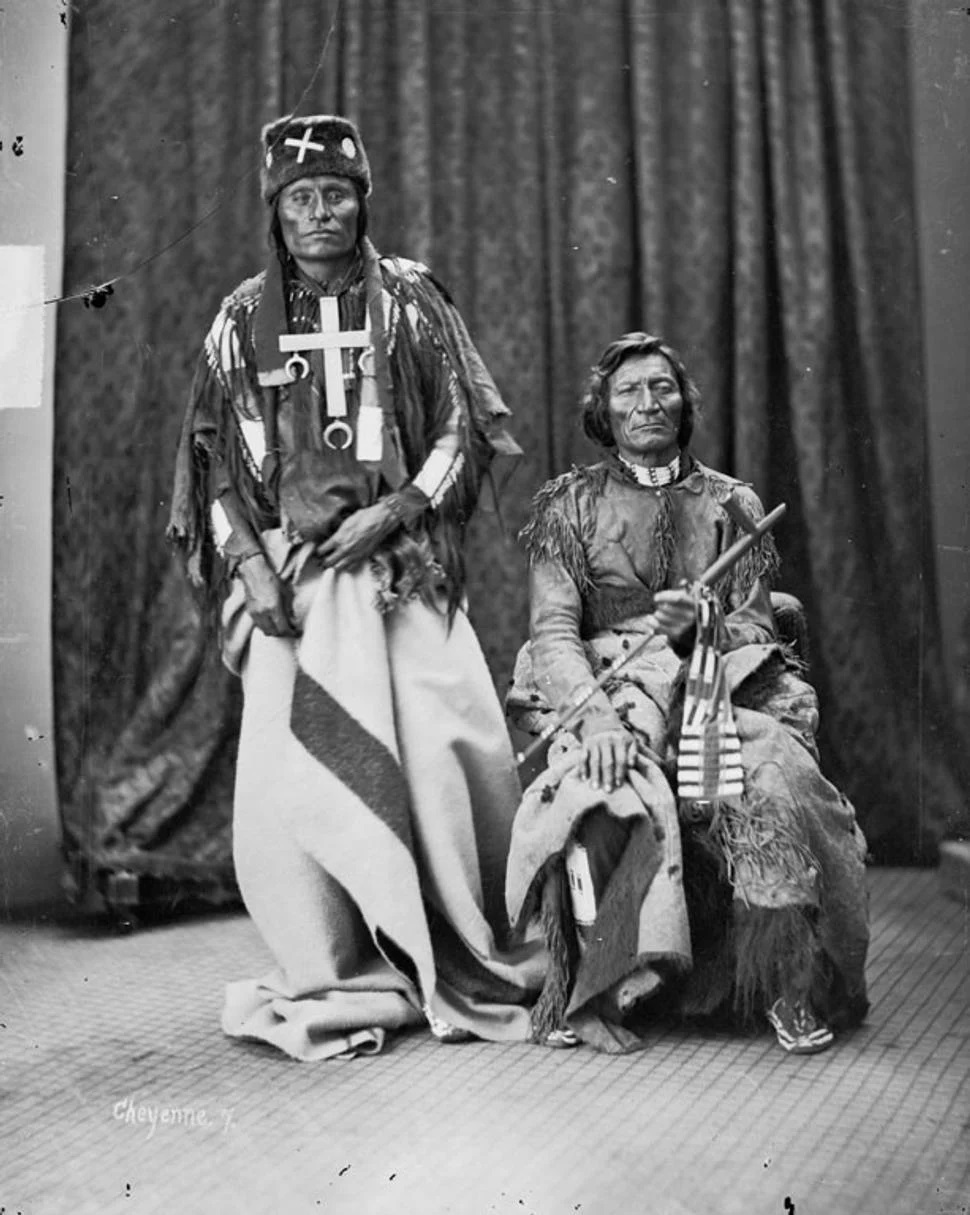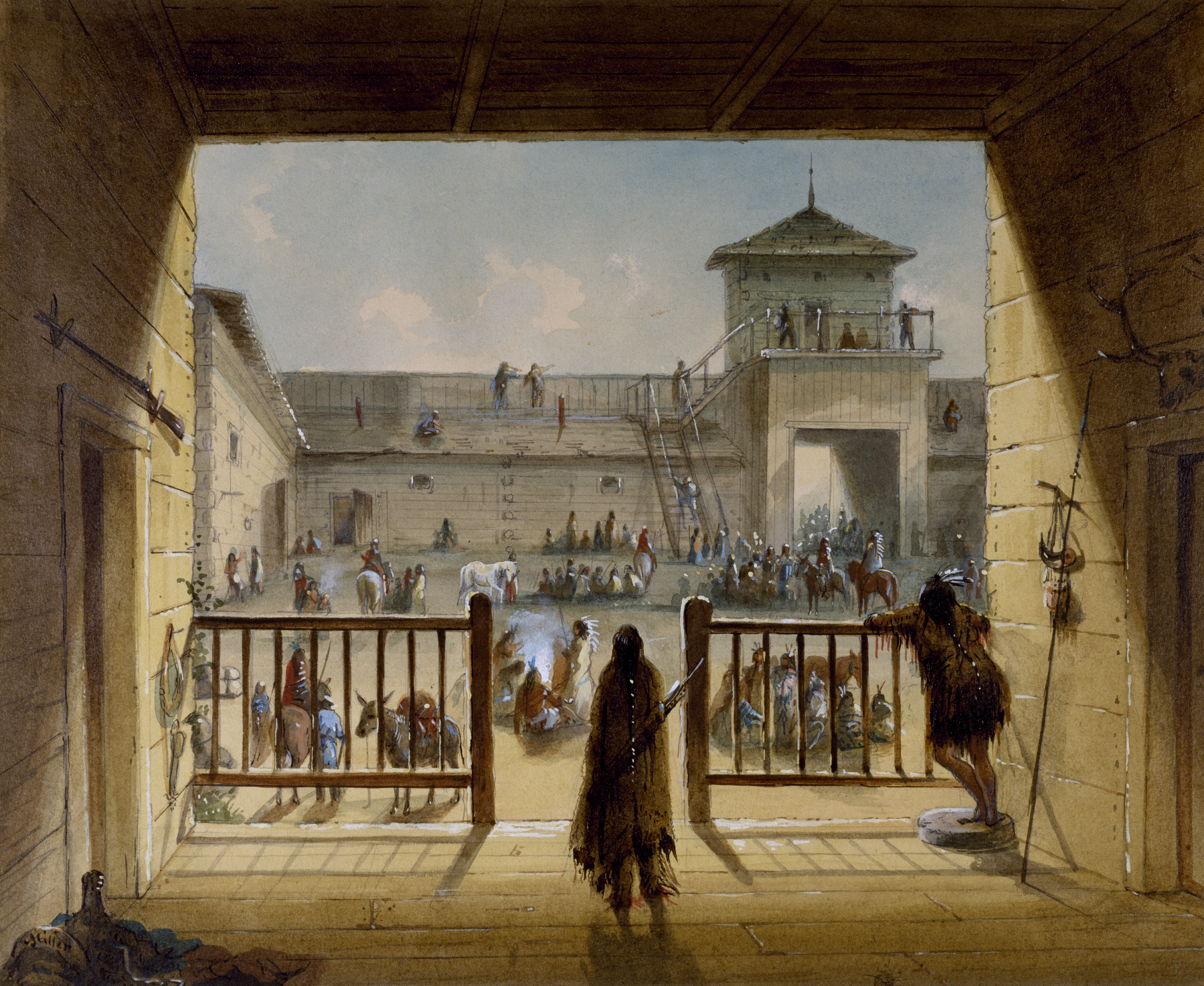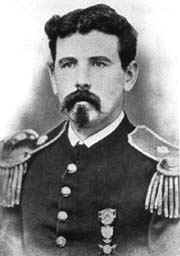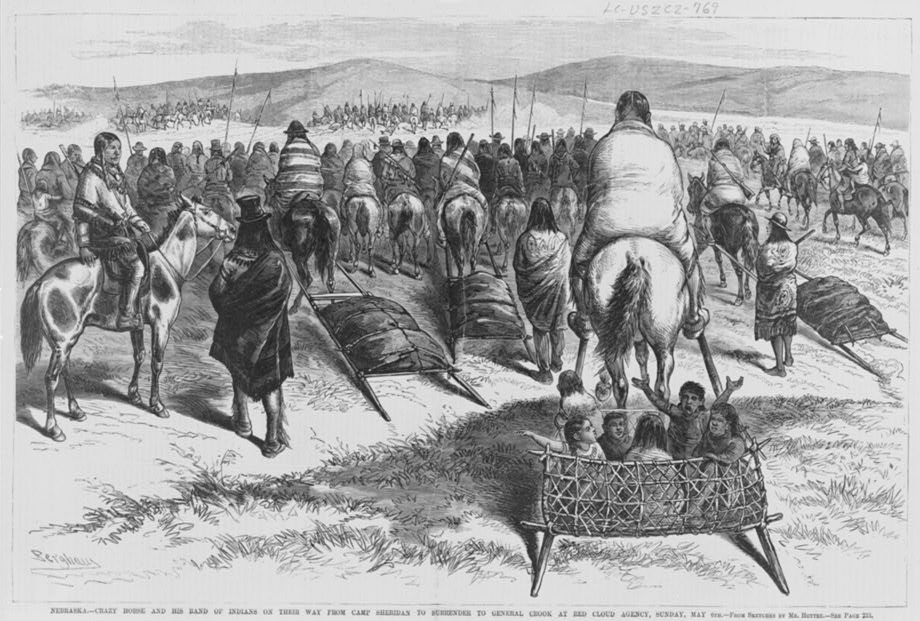|
Northern Cheyenne Exodus
The Northern Cheyenne Exodus, also known as Dull Knife's Raid, the Cheyenne War, or the Cheyenne Campaign, was the attempt of the Northern Cheyenne to return to the north, after being placed on the Southern Cheyenne reservation in the Indian Territory, and the United States Army operations to stop them. The period lasted from 1878 to 1879. Background Following the Battle of the Little Bighorn attempts by the U.S. Army to subdue the Northern Cheyenne intensified. In 1877, after the Dull Knife Fight, when Crazy Horse surrendered at Fort Robinson a few Cheyenne chiefs and their people surrendered as well. The Cheyenne chiefs that surrendered at the fort were Dull Knife, Little Wolf, Standing Elk, and Wild Hog with nearly one thousand Cheyenne. On the other hand, Two Moon surrendered at Fort Keogh with three hundred Cheyenne in 1877. The Cheyenne wanted and expected to live on the reservation with the Sioux in accordance with an April 29, 1868 treaty of Fort Laramie of which both Dul ... [...More Info...] [...Related Items...] OR: [Wikipedia] [Google] [Baidu] |
American Indian Wars
The American Indian Wars, also known as the American Frontier Wars, and the Indian Wars, were fought by European governments and colonists in North America, and later by the United States and Canadian governments and American and Canadian settlers, against various American Indian and First Nation tribes. These conflicts occurred in North America from the time of the earliest colonial settlements in the 17th century until the early 20th century. The various wars resulted from a wide variety of factors, the most common being the desire of settlers and governments for lands that the Indian tribes considered their own. The European powers and their colonies also enlisted allied Indian tribes to help them conduct warfare against each other's colonial settlements. After the American Revolution, many conflicts were local to specific states or regions and frequently involved disputes over land use; some entailed cycles of violent reprisal. As settlers spread westward across North America ... [...More Info...] [...Related Items...] OR: [Wikipedia] [Google] [Baidu] |
Dee Brown (writer)
Dorris Alexander "Dee" Brown (February 29, 1908 – December 12, 2002) was an American novelist, historian, and librarian. His most famous work, ''Bury My Heart at Wounded Knee'' (1970), details the history of the United States' westward colonization of the continent between 1830 and 1890 from the point of view of Native Americans. Personal life Born in Alberta, Louisiana, a sawmill town, Brown grew up in Ouachita County, Arkansas, which experienced an oil boom when he was thirteen years old. Brown's mother later relocated to Little Rock so he and his brother and two sisters could attend a better high school. He spent much time in the public library. Reading the three-volume ''History of the Expedition under the Command of Captains Lewis and Clark'' helped him develop an interest in the American West. He also discovered the works of Sherwood Anderson and John Dos Passos, and later William Faulkner and Joseph Conrad. He cited these authors as those most influential on his o ... [...More Info...] [...Related Items...] OR: [Wikipedia] [Google] [Baidu] |
Fort Reno (Oklahoma)
Fort Reno is a former United States Army cavalry post west of El Reno, Oklahoma. It is named for General Jesse L. Reno, who died at the Battle of South Mountain in the American Civil War. History Fort Reno began as a temporary camp in July 1874 near the Darlington Agency, which needed protection from an Indian uprising that eventually led to the Red River War. After the conflict ended, the post remained to control and protect the Southern Cheyenne and Southern Arapaho reservation, and Fort Reno was established as a permanent fort on July 15, 1874. Soldiers from Fort Reno also attempted to control Boomer and Sooner activity during the rush to open the Unassigned Lands for settlement. Among the units stationed here were the famed Ninth Cavalry of Buffalo Soldiers. The fort lent its name to the city of El Reno, which still exists, as well as Reno City, which was abandoned before Oklahoma statehood. After Oklahoma statehood in 1907, the post was abandoned on February 24, 1908, ... [...More Info...] [...Related Items...] OR: [Wikipedia] [Google] [Baidu] |
Fort Laramie
Fort Laramie (founded as Fort William and known for a while as Fort John) was a significant 19th-century trading-post, diplomatic site, and military installation located at the confluence of the Laramie and the North Platte rivers. They joined in the upper Platte River Valley in the eastern part of the present-day U.S. state of Wyoming. The fort was founded as a private trading-post in the 1830s to service the overland fur-trade; in 1849, it was purchased by the United States Army. The site was located east of the long climb leading to the best and lowest crossing-point over the Rocky Mountains at South Pass and became a popular stopping-point for migrants on the Oregon Trail. Along with Bent's Fort on the Arkansas River, the trading post and its supporting industries and businesses were the most significant economic hub of commerce in the region. Fort William was founded by William Sublette and his partner Robert Campbell in 1834. In the spring of 1835, Sublette sold th ... [...More Info...] [...Related Items...] OR: [Wikipedia] [Google] [Baidu] |
Sioux
The Sioux or Oceti Sakowin (; Dakota language, Dakota: Help:IPA, /otʃʰeːtʰi ʃakoːwĩ/) are groups of Native Americans in the United States, Native American tribes and First Nations in Canada, First Nations peoples in North America. The modern Sioux consist of two major divisions based on Siouan languages, language divisions: the Dakota people, Dakota and Lakota people, Lakota; collectively they are known as the Očhéthi Šakówiŋ ("Seven Council Fires"). The term "Sioux" is an exonym created from a French language, French transcription of the Ojibwe language, Ojibwe term "Nadouessioux", and can refer to any ethnic group within the Great Sioux Nation or to any of the nation's many language dialects. Before the 17th century, the Dakota people, Santee Dakota (; "Knife" also known as the Eastern Dakota) lived around Lake Superior with territories in present-day northern Minnesota and Wisconsin. They gathered wild rice, hunted woodland animals and used canoes to fish. Wars ... [...More Info...] [...Related Items...] OR: [Wikipedia] [Google] [Baidu] |
Fort Keogh
Fort Keogh is a former United States Army post located at the western edge of modern Miles City, Montana, Miles City, in the U.S. state of Montana. It is situated on the south bank of the Yellowstone River, at the mouth of the Tongue River (Montana), Tongue River. Colonel Nelson A. Miles, commanding the 5th Infantry Regiment (United States), 5th Infantry Regiment, founded the post in August 1876, in the wake of the Battle of the Little Bighorn, as a base for patrols to prevent the Cheyenne and Sioux involved in the battle from escaping to Canada. The fort was originally known as the Tongue River Cantonment for two years. When relocated one mile west in 1878, it was renamed Fort Keogh in honor of Captain Myles Keogh, who was killed at the Little Bighorn. In 1877, the fort became the headquarters for the newly created District of the Yellowstone (a sub-unit of the Department of Dakota), which was commanded by Miles. The development of Fort Keogh as a military installation soon stimu ... [...More Info...] [...Related Items...] OR: [Wikipedia] [Google] [Baidu] |
Two Moon
Two Moons (1847–1917), or ''Ishaynishus'' (Cheyenne: ''Éše'he Ôhnéšesêstse''), was one of the Cheyenne chiefs who took part in the Battle of the Little Bighorn and other battles against the United States Army. Life Two Moons was the son of Carries the Otter, an Arikara captive who married into the Cheyenne tribe. Perhaps known best for his participation in battles such as the Battle of the Rosebud against General Crook on June 17, 1876, in the Montana Territory, the Battle of Little Big Horn on June 25, 1876 and what would prove to be his last battle, the Battle of Wolf Mountain on January 8, 1877. Two Moons' defeat at Wolf Mountain by General Nelson A. Miles led inevitably to the surrender of his Cheyenne band to Miles at Fort Keogh in April 1877. After the surrender of his Cheyenne band, Two Moons enlisted as an Indian Scout under General Miles. As a result of Two Moons' pleasant personality, the friendliness that he showed towards the whites, as well as his ability to ... [...More Info...] [...Related Items...] OR: [Wikipedia] [Google] [Baidu] |
Wild Hog
The feral pig is a domestic pig which has gone feral, meaning it lives in the wild. They are found mostly in the Americas and Australia. Razorback and wild hog are Americanisms applied to feral pigs or boar-pig hybrids. Definition A feral pig is a domestic pig that has escaped or been released into the wild, and is living more or less as a wild animal, or one that is descended from such animals. Zoologists generally exclude from the ''feral'' category animals that, although captive, were genuinely wild before they escaped. Accordingly, Eurasian wild boar, released or escaped into habitats where they are not native, such as in North America, are not generally considered feral, although they may interbreed with feral pigs. Likewise, reintroduced wild boars in Western Europe are also not considered feral, despite the fact that they were raised in captivity prior to their release. In the New World North America Domestic pigs were first introduced to the Americas in the 16th ce ... [...More Info...] [...Related Items...] OR: [Wikipedia] [Google] [Baidu] |
Standing Elk
Standing, also referred to as orthostasis, is a position in which the body is held in an ''erect'' ("orthostatic") position and supported only by the feet. Although seemingly static, the body rocks slightly back and forth from the ankle in the sagittal plane. The sagittal plane bisects the body into right and left sides. The sway of quiet standing is often likened to the motion of an inverted pendulum. Standing at attention is a military standing posture, as is stand at ease, but these terms are also used in military-style organisations and in some professions which involve standing, such as modeling. ''At ease'' refers to the classic military position of standing with legs slightly apart, not in as formal or regimented a pose as standing at attention. In modeling, ''model at ease'' refers to the model standing with one leg straight, with the majority of the weight on it, and the other leg tucked over and slightly around. Control Standing posture relies on dynamic rather than st ... [...More Info...] [...Related Items...] OR: [Wikipedia] [Google] [Baidu] |
Dull Knife
Morning Star (Cheyenne: ''Vóóhéhéve''; also known by his Lakota Sioux name ''Tȟamílapȟéšni'' or its translation, Dull Knife) (1810–1883) was a great chief of the Northern Cheyenne people and headchief of the ''Notameohmésêhese'' ("Northern Eaters"; also simply known as ''Ȯhmésėhese'' or "Eaters") band on the northern Great Plains during the 19th century. He was noted for his active resistance to westward expansion and the United States federal government. It is due to the courage and determination of Morning Star and other leaders that the Northern Cheyenne still possess a homeland in their traditional country in present-day Montana. Although he was known as "Dull Knife" (or ''Motšêške Ôhnêxahpo'' in Cheyenne, a translation of his Lakota name) to local settlers, U.S. military leaders, and other American Indians, his Cheyenne name is translated as "Morning Star". A Cheyenne warrior in every sense of the word, Morning Star was described by many writers of the ... [...More Info...] [...Related Items...] OR: [Wikipedia] [Google] [Baidu] |
Fort Robinson
Fort Robinson is a former U.S. Army fort and now a major feature of Fort Robinson State Park, a public recreation and historic preservation area located west of Crawford on U.S. Route 20 in the Pine Ridge region of northwest Nebraska. The fort was declared a National Historic Landmark in 1960 and is part of the Fort Robinson and Red Cloud Agency historic district. This includes Fort Robinson and the site of the second Red Cloud Agency (about to the east). The district also includes the Camp Camby site and the 1886 Percy Homestead. The fort is managed by the Nebraska Game and Parks Commission, with some individual buildings operated by the History Nebraska and the University of Nebraska. History In August 1873, the Red Cloud Agency was moved from the North Platte River to the White River, near what is now Crawford, Nebraska, in the northwest corner of the state. The following March, the U. S. Government authorized the establishment of a military camp at the agency site. Som ... [...More Info...] [...Related Items...] OR: [Wikipedia] [Google] [Baidu] |
Crazy Horse
Crazy Horse ( lkt, Tȟašúŋke Witkó, italic=no, , ; 1840 – September 5, 1877) was a Lakota war leader of the Oglala band in the 19th century. He took up arms against the United States federal government to fight against encroachment by white American settlers on Native American territory and to preserve the traditional way of life of the Lakota people. His participation in several famous battles of the Black Hills War on the northern Great Plains, among them the Fetterman Fight in 1866, in which he acted as a decoy, and the Battle of the Little Bighorn in 1876, in which he led a war party to victory, earned him great respect from both his enemies and his own people. In September 1877, four months after surrendering to U.S. troops under General George Crook, Crazy Horse was fatally wounded by a bayonet-wielding military guard while allegedly resisting imprisonment at Camp Robinson in present-day Nebraska. He was honored by the U.S. Postal Service in 1982 with a 13¢ Great ... [...More Info...] [...Related Items...] OR: [Wikipedia] [Google] [Baidu] |








